Some activities are just plain fun—and this one might be our coolest (pun intended) yet.
I love using sensory bins to create simple, screen-free moments with my kid, especially when they come with a bit of imagination and a tiny adventure. This Penguin Rescue Sensory Bin is the perfect winter or polar-themed activity that gets kids digging, exploring, and rescuing their chilly little friends from the snow.
What I love about this bin is how open-ended it is. One minute, your child is gently brushing snow off a penguin’s back like a wildlife rescuer. The next, they’re building snowy forests and creating an entire arctic world.
And the best part? You don’t need to go buy a fancy kit. All you need is some baking soda, shaving cream, and a few small toys.
Supplies and Materials
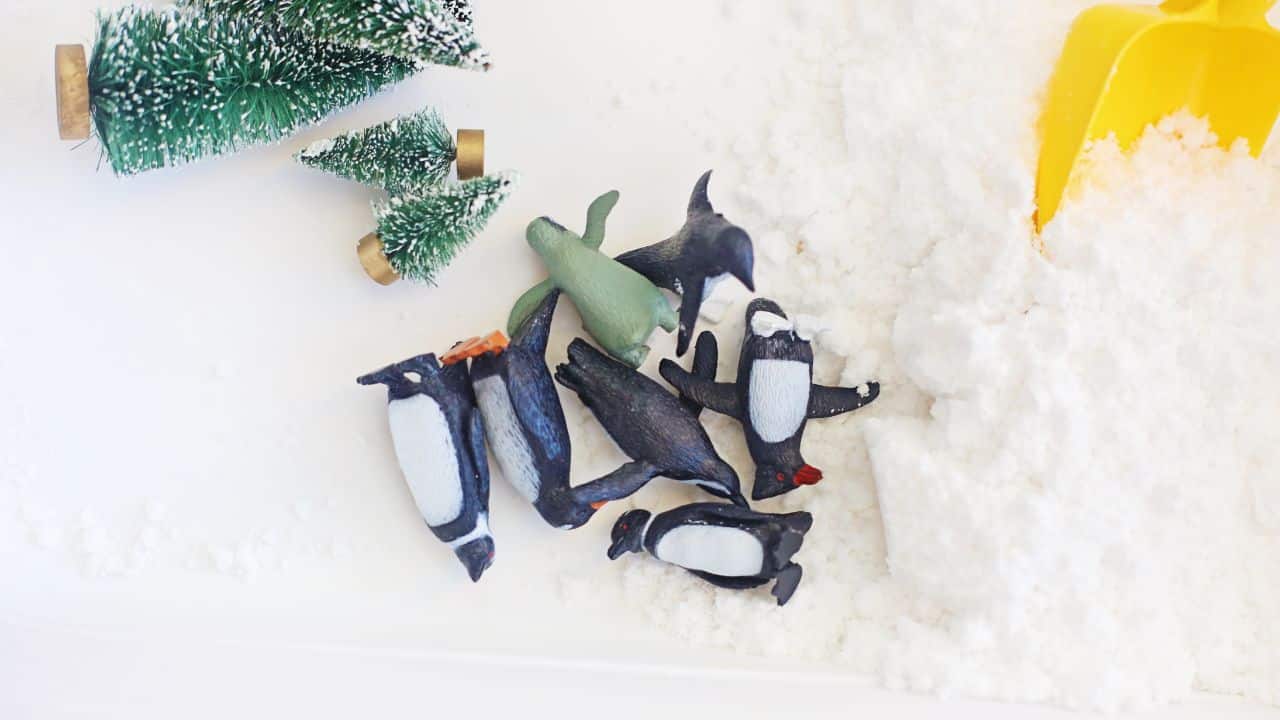
You’ll need:
- Fake snow (store-bought or homemade—see recipe below)
- Toy penguins (use different species for learning fun!)
- Toy shovel or spoon
- Decorative mini trees (optional but adds great texture and scenery)
Optional: a small bin of warm water nearby for easy hand rinsing or melting snow rescues.
How to Make Fake Snow
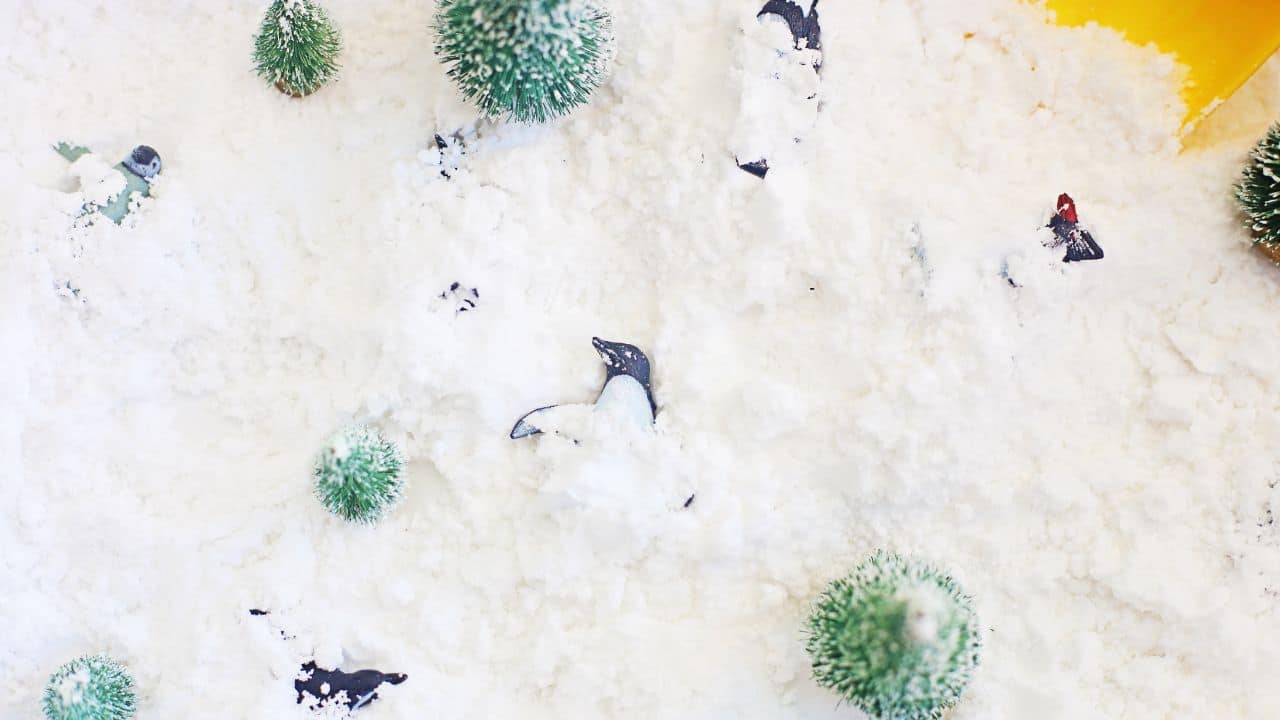
Making your own fake snow is half the fun and super simple:
- Ingredients:
1 part baking soda
1 part shaving cream (unscented is best) - Instructions:
Add equal parts baking soda and shaving cream to a bin and mix until combined.
The snow is ready when it’s moldable but not sticky.
Too dry? Add more shaving cream. Too sticky? Add more baking soda.
Pro tip: If stored in an airtight container, this snow will last for several days of play!
Instructions & Play Ideas
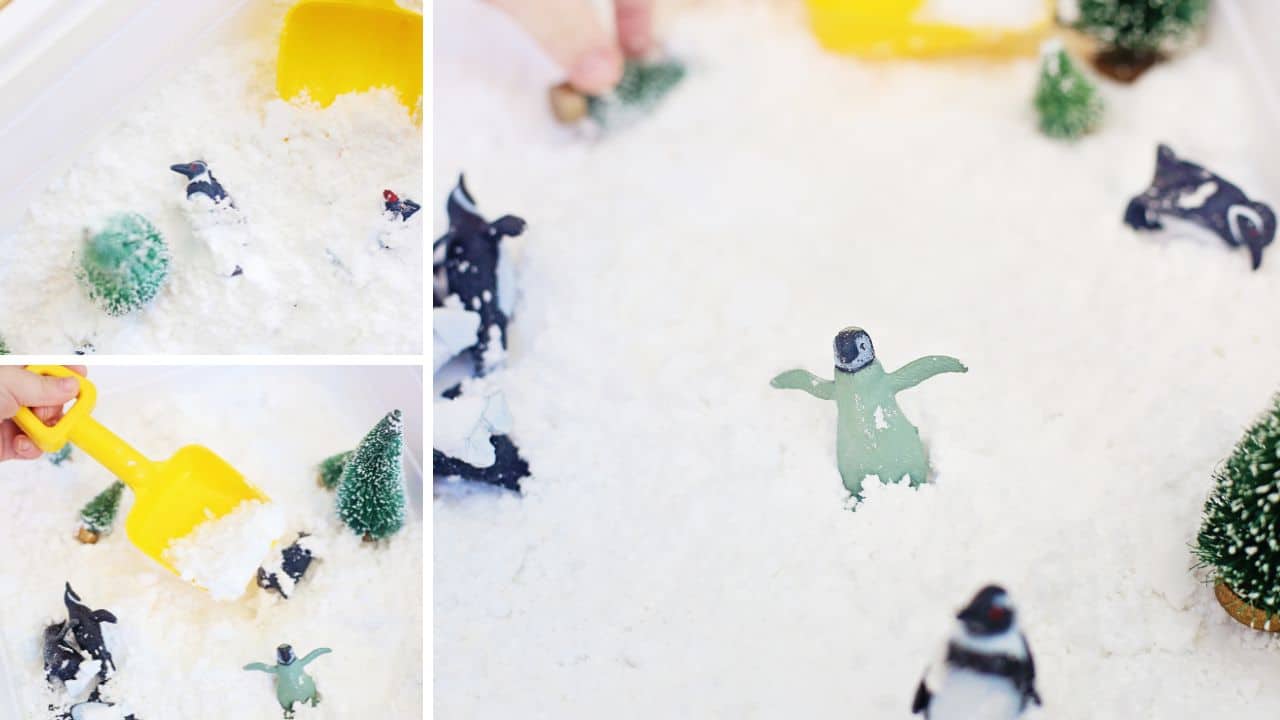
- Set the Scene: Spread your homemade snow across the bottom of the bin. Bury the penguins in different spots and press in your mini trees to create a winter wonderland.
- Rescue Time: Hand your child a shovel or spoon and encourage them to gently dig for the hidden penguins. Leave some showing for younger kids. For older ones, bury them completely and turn it into a rescue mission.
- Snowy Details: Rolling the trees in fake snow makes them look dusted with snowflakes—kids love this little detail, and it rinses off easily afterward.
- Species Search: Add an educational twist by pulling up photos of real penguin species and encouraging your child to match the toy penguins to what they see. You can talk about where each one lives, how they look different, or what they eat.
- Pretend Play: Create a story! Maybe the penguins are lost and need help finding their family. Or maybe they’re hiding from a snowstorm. Follow your child’s lead—they’ll turn it into their own mini polar expedition.
Benefits of the Penguin Rescue Sensory Bin
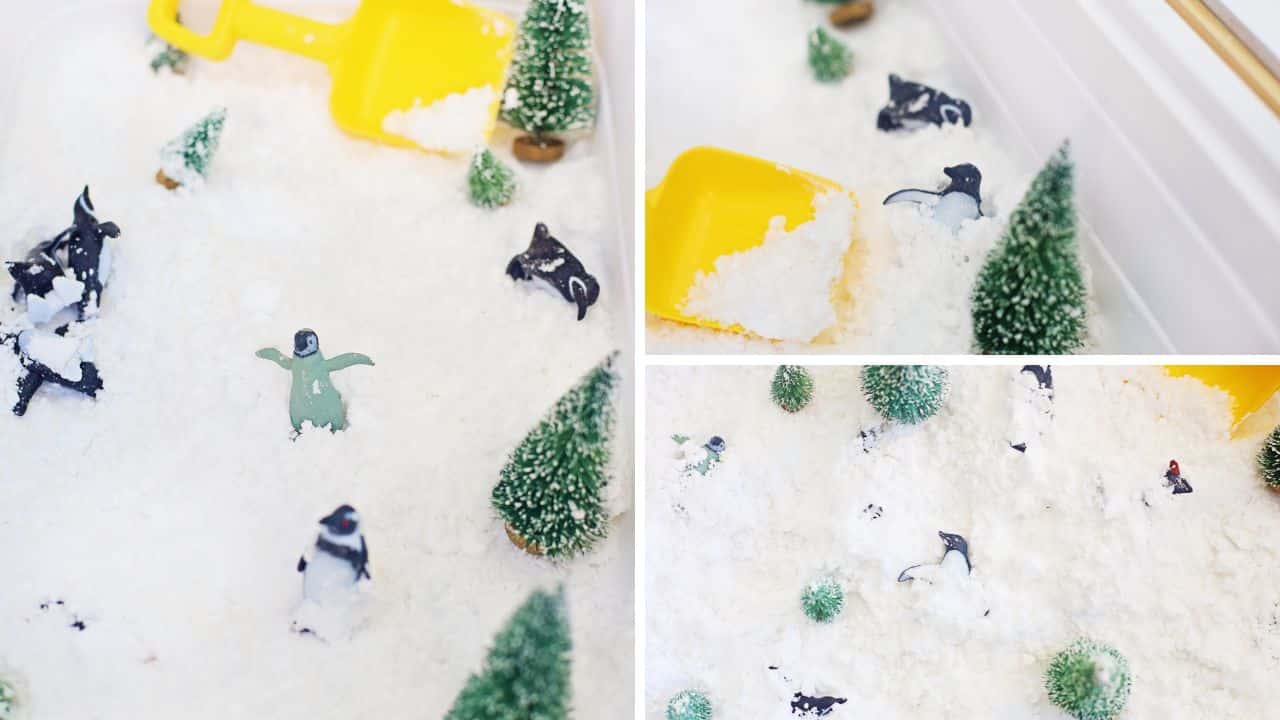
- Fine Motor Skills: Digging with a scoop, brushing off snow, and grabbing small toys all support hand strength and coordination.
- Sensory Exploration: The cool, fluffy texture of the fake snow is calming and stimulating at the same time—perfect for tactile learners.
- Imaginative Thinking: Kids get to create a storyline, set up their own environment, and problem-solve as they play.
- Language & Cognitive Development: Naming penguin types, talking through rescue strategies, and describing textures all support vocabulary growth and memory.
- Emotional Connection: Activities like this invite kids to nurture and protect (even in play), which can build empathy and creative confidence.
Fun Facts & Conversation Starters
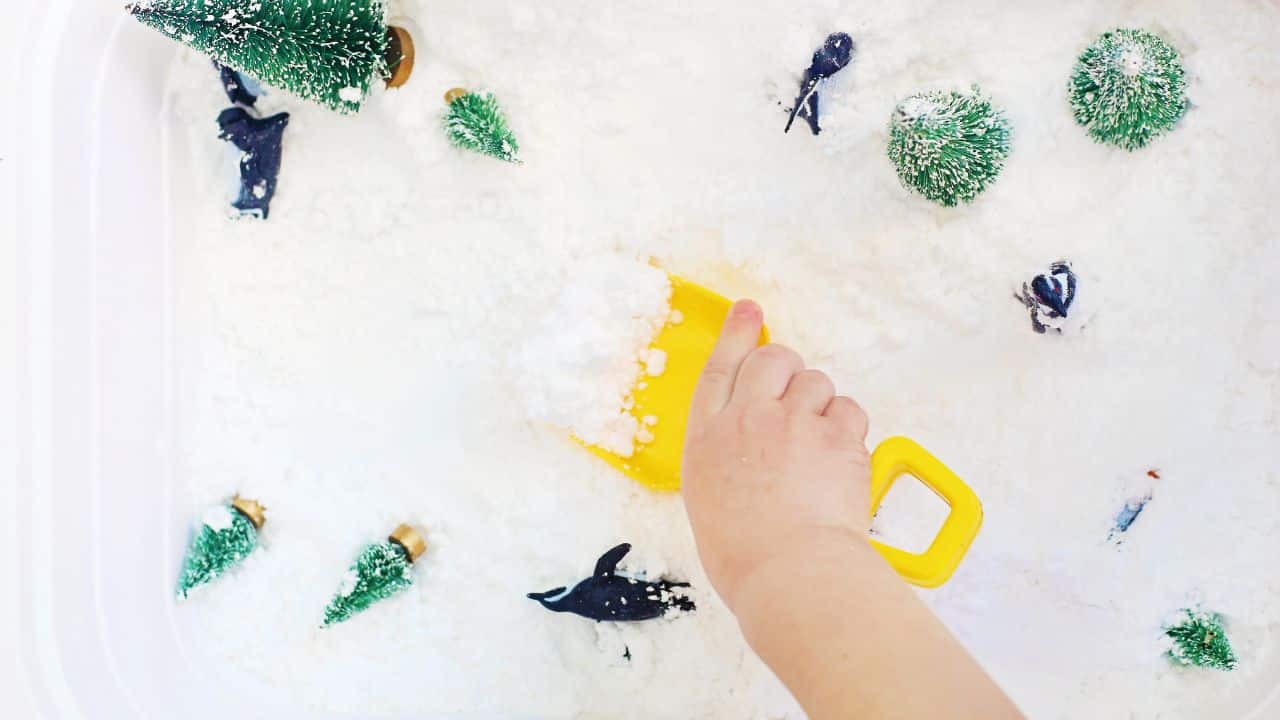
Want to keep the conversation going while they dig?
Fun Penguin Facts
- Penguins are birds, but they can’t fly—they’re excellent swimmers instead!
- Emperor penguins can dive over 1,500 feet deep in search of food.
- Not all penguins live in freezing temperatures. Some live in warm climates like South Africa and even the Galapagos Islands.
- A group of penguins on land is called a waddle—and in water, it’s a raft!
- Penguins keep warm by huddling together and having a special layer of fat called blubber.
Conversation Starters
- If you were a penguin, what would your name be?
- How do you think a penguin stays warm in the snow?
- What would you do if you found a penguin in your backyard?
- Do you think penguins are fast? How would they race?
- What kind of home would a penguin build in the snow?
This Penguin Rescue Sensory Bin is simple to set up, fun to repeat, and makes a great winter activity—whether you’re indoors on a snow day or just feeling like a chilly-weather adventure. It’s a great way to bond, learn, and play without needing a single battery or charger.
Frequently Asked Questions
What age is this best for?
Perfect for ages 2 and up! Toddlers will love the sensory aspect, while older kids can get into the pretend play and challenges. Just supervise younger kids who may try to taste the snow.
Is fake snow safe?
Yes! Baking soda and shaving cream are non-toxic, but it’s not meant to be eaten. Always supervise during play.
Can I reuse the snow?
Yes! Store it in a sealed container for a few days of play. If it dries out, just refresh with a little more shaving cream.
Do I have to use toy penguins?
Nope! Use whatever winter animal toys you have—polar bears, seals, or even dinosaurs for a silly twist.
How messy is this?
It’s not bad—just set the bin on a towel or play mat. Have a bowl of warm water and a towel nearby for easy hand cleaning.
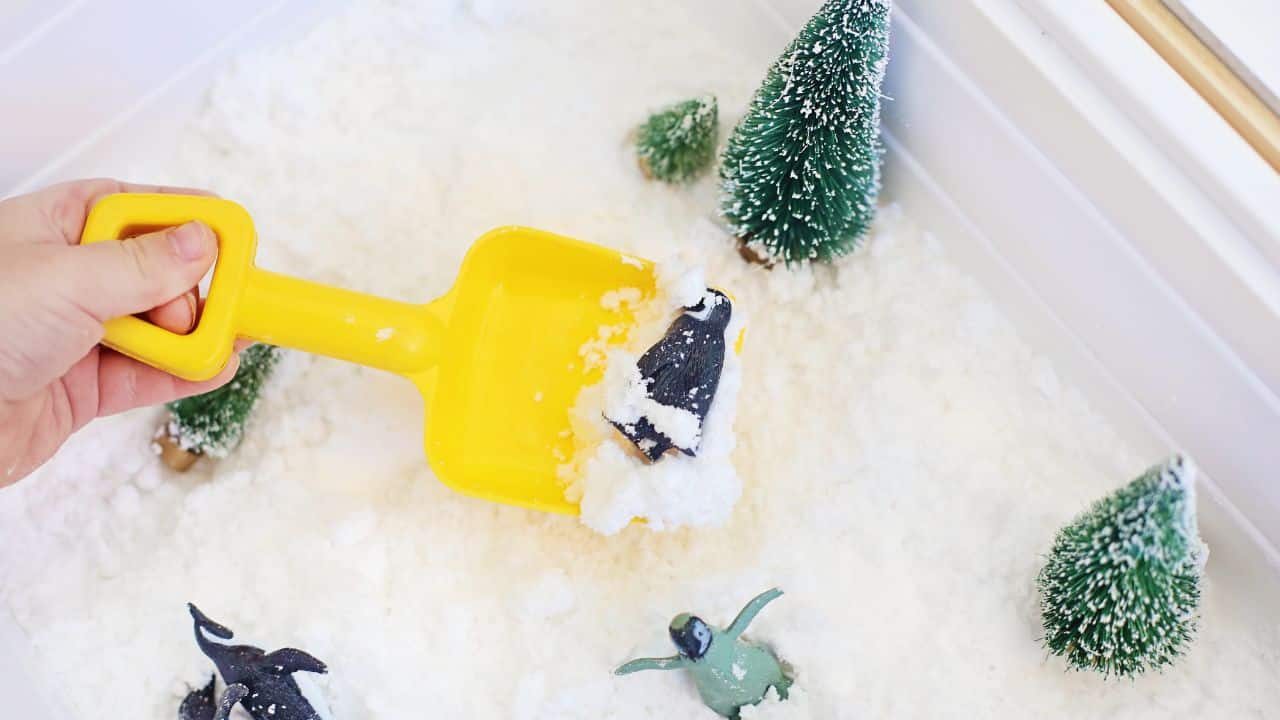
Leave a Reply